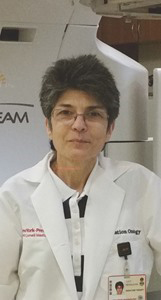Program Information
Dosimetric Comparison of Cs-131 Vs. I-125 Vs. Pd-103 Intraoperative Brachytherapy in Patients with Resected Brain Metastasis
L Nedialkova1*, A Sabbas2, S Trichter3, F Kulidzhanov4, M Delamerced5, B Parashar6, Nori7, K Chao8, M Yondorf9, G Wernicke10, (1) New York Presbyterian Hospital, New York, NY, (2) New York Presbyterian Hospital/ Cornell, New York, NY, (3) New York Presbyterian Hospital, Weill Cornell Medical Center, New York, NY, (4) New York Presbyterian Hospital, Weill Cornell Medical Center, New York, NY (5) New York Presbyterian Hospital, Weill Cornell Medical Center, New York, NY, (6) New York Presbyterian Hospital, New York, New York, (7) NewYork-Presbyterian Hospital, Weill Cornell Medical Center, New Yor, NY, (8) NewYork Presbyterian Hospital\Weill Cornell Medical College and Columbia Un, New York, NY, (9) Weill Cornell Medical School, New York, NY, (10) NewYork-Presbyterian Hospital, New York, NY
SU-E-T-259 Sunday 3:00PM - 6:00PM Room: Exhibit HallPurpose: Cs-131, I-125 and Pd-103, have been used for permanent implant brachytherapy. Cs-131 has shorter half-life - 9.7 days as compared to I-125 and Pd-103 - 59.4 and 17.0 days, respectively. It is likely more biologically efficient for tumor cell kill as the initial dose rate from Cs-131(23.9 cGy/h) is 4 times higher than that of I-125(5.8 cGy/h) and twice of Pd-103(13.62 cGy/h). These isotopes differ in their average gamma-ray energies (30.4keV, 28.5keV and 20.8keV, respectively). This study examines the dosimetric differences amongst these isotopes when used as a permanent implant for patients with resected brain metastasis with regard to exposure of normal brain tissue and the potential for developing radiation necrosis (RN).
Methods: 24 patients with a single newly diagnosed and resected brain metastasis were implanted with Cs-131. Post-op dosimetry plans were generated for Cs-131, I-125 model #6711 and Pd-103 model #200. The prescription dose was 80 Gy to 5mm depth from the surface cavity. The mean air kerma strength for the Cs-131, I-125 and Pd-103 seeds were 2.4U, 0.6985U and 2.11U respectively. The volume of brain tissue exposed to radiation at 100%, 80% and 50% isodose lines were compared for each isotope.
Results: Significantly larger volume of brain tissue exposed to radiation, with the use of I-125 when compared to both Cs-131 (p less than 0.00005) and Pd-103 (p less than 0.00004). There is no significant difference when comparing Cs-131 to Pd-103 (p=0.26605).
Conclusion: In this analysis, we report that Cs-131 and Pd-103 expose less normal brain tissue to radiation when compared to I-125, thus providing a dosimetric superiority and subjecting less tissue to RN. In addition, Cs-131 has the shortest T1/2 and in our trial with a median follow up of 10 months, all 24 patients have 100% local control while experiencing 0% incidence of RN.
Contact Email:


